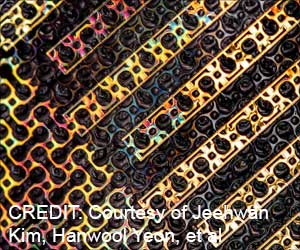“With this conformable, breathable skin patch, there won’t be any sweat accumulation, wrong information, or detachment from the skin,” says Jeehwan Kim, associate professor of mechanical engineering at MIT.
‘Natural skin pores and kirigami patterns helped researchers in developing a breathable skin tape. It successfully measured vitals like temperature, pulse, and hydration levels through human skin, even during physical workouts.’
Wearable skin tapes using remote epitaxy
Jeehwan Kim, associate professor of mechanical engineering at MIT and team, specialized in a technique called remote epitaxy, an approach that involves the designing of high-quality, ultrathin semiconductor films at high temperatures. The skins of half-made films are then selectively peeled and combined to form more flexible and thinner sensors by stacking one over the other.
Amorepacific, a cosmetics company joined hands with the team to design a thin wearable tape that can detect changes in skin continuously.
Skin pores and Kirigami solved the problem
The only problem in designing such a product was the non-breathable nature of the final sensor. This can cause skin damage and sensor malfunctioning due to the accumulation of sweat between the patch and human skin. The team adopted a strategy to produce a breathable and flexible end product inspired from the natural sweat pores of the human skin and kirigami design (a Japanese paper-cutting method) to solve these problems.
They etched periodic patterns of holes, cut out narrow channels between each hole, and finally made the end product. When tested on a volunteer’s skin continuously over a week, the e-skin tape measured his vitals like temperature, pulse, and hydration levels during normal times and some activities like running on a treadmill and consuming a spicy meal.
“Our simple idea is, if we provide artificial sweat ducts in electronic skin and make highly-permeable paths for the sweat, we may achieve long-term monitorability,” explained Hanwool Yeon, a post-doctoral researcher at the MIT.
The team planned to improve the design’s strength further as it is very soft and might get physically damaged. The findings of the research were published in the journal Science Advances .
Source: Medindia



